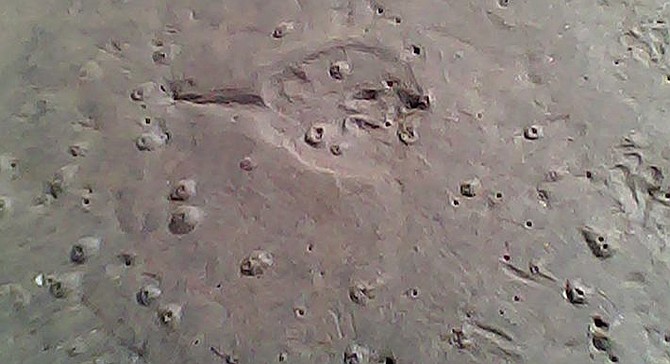 Facebook
Facebook
 X
X
 Instagram
Instagram
 TikTok
TikTok
 Youtube
Youtube

There are areas in San Diego for fly fishing where wading or float tubing access is easy and there are plenty of tidal beds and shallow water.
Flies that resemble the prey of bass, halibut, migratory corbina, and orange-mouth corvina work well; I have found that shrimp flies tied to resemble the ghost shrimp in the littoral zone between the tides work best. As the tide floods in, so do the predators between the eel grass and shore and around shrimp beds.
During the high tide, the corbina will be near the bottom, blowing shrimp out of their holes in the sandy clay. A walk along the flats on the low tide will give an idea of the activity in any area. If there are holes about 1/8 -1/4 inches in diameter and some volcano-looking holes - from the size of a baseball on up to a few feet across — then there are shrimp and predators blowing them out to feed.
The larger volcanoes usually indicate larger bat rays or shovelnose sand sharks. Corbina tend to leave a small mound around a hole about the size of a soup bowl. Anglers should keep the fly working across and just of the bottom for the bottom feeders in the shallows.
A low tide surveillance can expose other happenings during the previous high tide; halibut imprints, crab tracks and freshly crunched clam shells all are indicative of a good feeding area. The activity by the bottom foragers draws small baitfish and other gamefish such as bass and halibut. For these fish, the same shrimp fly will work, though it is sometimes better to use one resembling more a baitfish and keep it higher in the water column than the shrimp fly.
On Sundays from 9am -12pm, San Diego Fly Fishers host a free Fly Casting Clinic at Lake Murray open to the public.


There are areas in San Diego for fly fishing where wading or float tubing access is easy and there are plenty of tidal beds and shallow water.
Flies that resemble the prey of bass, halibut, migratory corbina, and orange-mouth corvina work well; I have found that shrimp flies tied to resemble the ghost shrimp in the littoral zone between the tides work best. As the tide floods in, so do the predators between the eel grass and shore and around shrimp beds.
During the high tide, the corbina will be near the bottom, blowing shrimp out of their holes in the sandy clay. A walk along the flats on the low tide will give an idea of the activity in any area. If there are holes about 1/8 -1/4 inches in diameter and some volcano-looking holes - from the size of a baseball on up to a few feet across — then there are shrimp and predators blowing them out to feed.
The larger volcanoes usually indicate larger bat rays or shovelnose sand sharks. Corbina tend to leave a small mound around a hole about the size of a soup bowl. Anglers should keep the fly working across and just of the bottom for the bottom feeders in the shallows.
A low tide surveillance can expose other happenings during the previous high tide; halibut imprints, crab tracks and freshly crunched clam shells all are indicative of a good feeding area. The activity by the bottom foragers draws small baitfish and other gamefish such as bass and halibut. For these fish, the same shrimp fly will work, though it is sometimes better to use one resembling more a baitfish and keep it higher in the water column than the shrimp fly.
On Sundays from 9am -12pm, San Diego Fly Fishers host a free Fly Casting Clinic at Lake Murray open to the public.
Comments